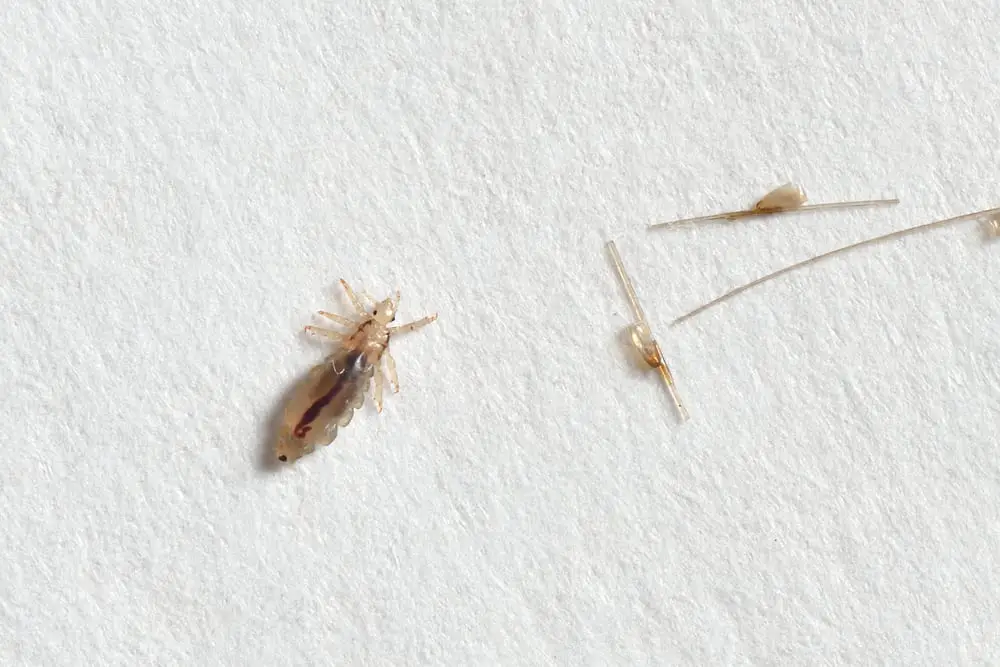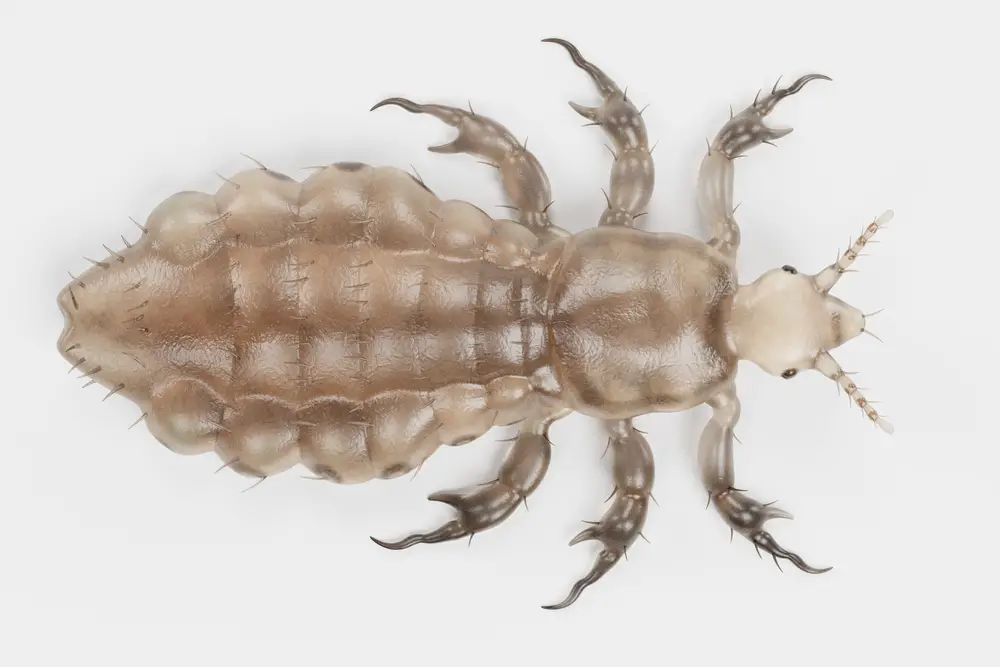Those pesky, tiny invaders – be it bed bugs or lice – can send even the most composed individuals into a flurry of concern. When faced with such unwelcome guests, our first instinct is often to grab the strongest weapon in our arsenal.
For many, Hot Shot Bed Bug Spray is a go-to solution. But, while its name suggests a lethal blow to bed bugs, can it wage war against a lice infestation too?
Navigating pest control products can be a maze, especially when one pest solution promises to tackle another seemingly unrelated issue.
Composition of Hot Shot Bed Bug Spray
- This product kills bed bugs and bed bug eggs, as well as crawling insects, brown dog ticks, fleas, dust mites, clothes moths and carpet beetles. Use as part of a bed bug treatment
- For use on mattresses, wood furniture and carpet. This product can also be used on bed frames, headboards, floors, moldings, ceiling and walls
- Controls bed bugs for up to 3 weeks on carpeted surfaces
The Hot Shot Bed Bug Spray is formulated with a combination of active and inactive ingredients to effectively deal with bed bugs. It is essential to understand its composition in order to evaluate its potential for killing lice.
The primary active ingredients in Hot Shot Bed Bug Spray are Pyrethrin and Permethrin. Pyrethrin is derived from chrysanthemum flowers and acts as a fast-acting insecticide targeting the nervous system of insects.
On the other hand, Permethrin is a synthetic version of pyrethrin specifically designed to provide a long-lasting effect and durability. These two components work together to achieve a powerful and efficient formulation that targets bed bugs.
In addition to Pyrethrin and Permethrin, Hot Shot Bed Bug Spray consists of other inert ingredients that enhance the product’s overall efficacy. These components ensure that the spray adheres to surfaces, extends the residual effect, and improves the distribution of active ingredients across the application area.
The exact concentration of each ingredient may vary, but the combined action of these elements contributes to the effectiveness of the spray.
When using Hot Shot Bed Bug Spray, it’s crucial to follow the instructions on the label to ensure proper application and achieve the desired results.
While the product is primarily designed to combat bed bugs, its active ingredients may also affect other insects, such as lice. However, always exercise caution and consult a professional if you’re unsure about using the spray for purposes other than its intended use.
How Hot Shot Bed Bug Spray Affects Pests

Impact on Bed Bugs
Hot Shot Bed Bug Spray is specifically designed to target bed bugs, and as such, it is highly effective in controlling and eliminating them.
The active ingredients in the spray interfere with the bed bugs’ nervous system, eventually leading to paralysis and death. When you apply the spray directly onto bed bugs, you will notice a quick reduction in their population.
Impact on Lice
Although Hot Shot Bed Bug Spray is not specifically formulated to kill lice, it may have some effect on them due to the similarities between lice and bed bugs. Lice are also insects with a nervous system susceptible to the active ingredients in the spray.
However, results may not be as efficient as with bed bugs, and it is essential to consider products specifically designed for lice treatment for a more effective outcome.
Effect on Other Pests
Hot Shot Bed Bug Spray’s primary target is bed bugs, but it may also have some impact on other pests, such as ticks, ants, and beetles. In many cases, these pests have a similar nervous system as bed bugs, making them vulnerable to the active ingredients in the spray.
Application of Hot Shot Bug Spray
Treating Bedding and Furniture
To effectively use Hot Shot Bed Bug Spray on your bed and furniture, remove all the bedding, including pillows, sheets, and mattress covers. Vacuum the mattress thoroughly, paying special attention to seams, edges, and indentations.
Apply the spray to all the surfaces of your mattress, bed frame, and furniture, focusing on cracks, crevices, and joints.
Remember to treat the seams, edges, and corners of your bedding and allow them to dry completely before reassembling your bed.
Treating Clothes and Personal Items
When it comes to clothing and personal items, remove them from your wardrobe or drawers and wash them in hot water, if possible.
For non-washable items, such as shoes or stuffed animals, place them in a heat-sealed plastic bag and leave them in the freezer for at least 48 hours.
After treating clothes and personal items, apply the Hot Shot Bed Bug Spray to the inside of your wardrobe, drawers, and any storage containers. Be sure to follow the instructions on the label for proper application.
Household Application
For a thorough application throughout your home, focus on areas where bed bugs or lice may be hiding. Start by vacuuming the entire house, including floorboards, baseboards, carpets, and rugs, reaching deep into cracks and crevices.
Then, apply the Hot Shot Bed Bug Spray to your carpets, floors, doors, window frames, and baseboards. Be sure to treat all surfaces, paying close attention to seams, cracks, and crevices, as bed bugs and lice are known to hide there.
Effectiveness Against Lice and Nits

Lice Elimination
Hot Shot bed bug spray can be an efficient tool when dealing with a head lice infestation. It helps in eliminating live lice and nits (lice eggs) by effectively treating the scalp, hair, and hair shafts.
When using Hot Shot bed bug spray for lice, follow the instructions carefully. Cover all areas of the scalp, paying special attention to the nape of the neck and behind your ears.
This will ensure that the active ingredients work directly on the lice and nits, making it easier to eliminate them.
Nits and Egg Removal
Head lice nits are small, oval-shaped, and difficult to remove, as they securely attach to the hair shaft. Although Hot Shot bed bug spray can effectively kill lice, it may not entirely eradicate nits and lice eggs.
For a more efficient treatment, you may want to consider using a fine-toothed comb specifically designed for lice removal. Comb through your hair, from the scalp to the tips, to dislodge any remaining nits or eggs from the hair shaft.
Prevention of Lice Reinfestation
Personal Hygiene
To prevent lice reinfestation, practicing good personal hygiene is crucial. You should wash your hair regularly and avoid sharing personal items such as brushes, combs, hats, and towels with others.
This reduces the risk of spreading lice to your family members and friends.
If your children are involved in activities that require close contact with others, such as team sports or sleepovers, remind them to be cautious about sharing their personal belongings.
Lice can easily transfer from one individual to another through direct contact or by sharing common items.
Preventing Environmental Infestation
Along with personal hygiene, keeping your environment clean is essential in preventing lice re-infestation.
Be sure to vacuum the carpets and upholstery in your home regularly, as well as clean any bedding, mattress, and pillows frequently. This will help eliminate any potential hiding places for lice or their eggs.
Dust mites, carpet beetles, and clothes moths can also contribute to a lice-friendly environment. To deter these pests, maintain cleanliness by vacuuming, laundering, and airing out your clothes and belongings periodically.
Additionally, consider using insect repellents or natural solutions to keep them at bay.
If you have pets, remember to groom them regularly and administer proper flea and tick treatments. Although lice infestations are more common among humans, your pets may still carry other pests that can exacerbate the problem.
Negative Effects and Safety Measures
Potential Harm to Humans and Pets
While Hot Shot bed bug spray is designed to kill bed bugs, it’s important to consider its potential effects on humans and pets. In some cases, the chemicals in the spray can cause irritation to the skin and mucous membranes.
This may result in itching, sores, and discomfort. Furthermore, excessive scratching can potentially lead to open wounds or infections.
Pets may also be sensitive to the chemicals in the spray. When using the product, it is important to keep them away from the treated areas until the spray has fully dried. Ingesting traces of the chemical can cause harm to your pets, so always make sure the area is clean before allowing them to return.
Safe Usage of the Product
To ensure that you and your pets stay safe while using Hot Shot bed bug spray, follow these precautionary guidelines:
- Read the label: Always read the instructions and safety guidelines provided on the product label. This will help you understand the proper usage and any necessary precautions to take during application.
- Ventilation: Make sure you are using the product in a well-ventilated area. Open windows and doors to allow for adequate airflow, which will help disperse any lingering chemical fumes.
- Protective gear: Wear gloves, goggles, and a mask when applying the spray to minimize direct contact with the chemicals.
- Proper storage: Keep the product out of reach of children and pets. Store it in a locked cabinet or on a high shelf to prevent any accidental ingestion or exposure.
- Seek medical attention: If you or a family member experiences a negative reaction to the product, such as itching or sores, consult a medical professional immediately. In case of pet exposure, contact your veterinarian for guidance.
Alternative Methods to Treat Lice
Use of Special Shampoos and Lotions
To treat and control lice, you can use special shampoos and lotions designed to eliminate these pests.
These products usually contain permethrin or pyrethrum, which effectively kill lice. Apply the product according to the label’s instructions, and follow the recommended treatment duration.
Keep in mind that some lice may develop resistance to these chemicals, so it’s essential to use them as directed and to avoid overuse. If the treatment isn’t working, consult a healthcare professional for alternative solutions.
Heat Treatments
Another effective method for controlling lice is heat treatment. Lice can’t survive high heat, so you can exploit this weakness. To do this, wash your clothes, bedding, and personal items like hats and brushes in hot water (minimum 130°F or 54°C), then dry them on high heat for at least 30 minutes.
This will help kill the lice and their eggs.
Additionally, you can use a handheld hairdryer to apply heat to your hair and scalp. This involves thoroughly drying your hair and scalp after washing to eliminate any surviving lice.
Remember to exercise caution and not to burn yourself while attempting this method.
Professional Pest Control
In cases where traditional approaches are not successful in controlling lice, you may seek professional pest control assistance. Professionals have access to specialized pesticides and equipment to tackle stubborn infestations effectively.
These experts can assess your situation, recommend appropriate treatments, and ensure the safety and effectiveness of the applied methods.
It’s essential to choose a reputable pest control provider and discuss the available options to find the best solution for your specific situation.









